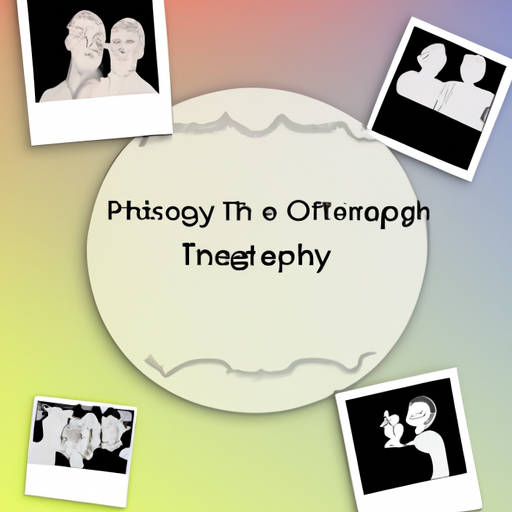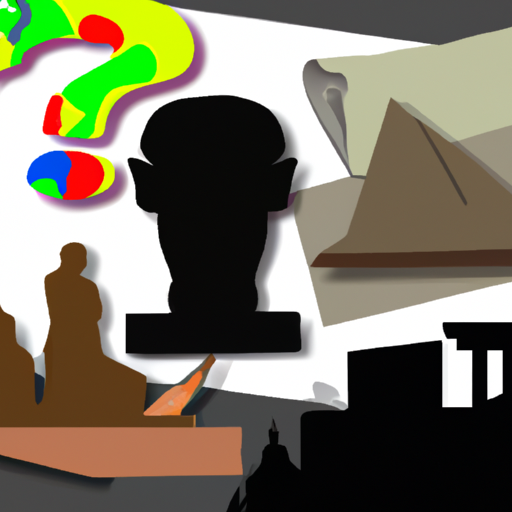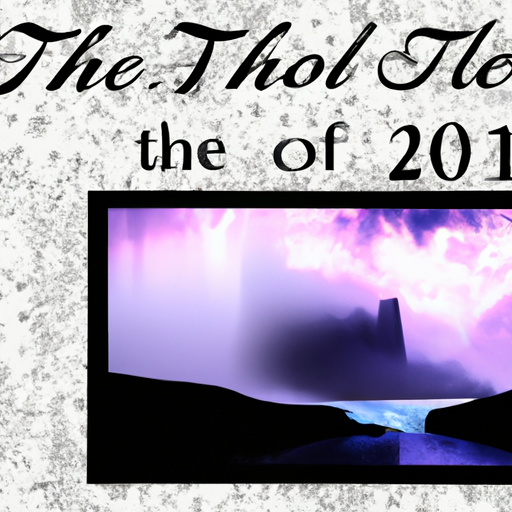History of Language: What is Older Than Tamil?
Uncover the antiquity of Tamil, an age-old language that has withstood the test of time! Unearth its secrets and explore its past, a story that continues to captivate generations. Delve into the depths of its rich heritage and uncover the stories behind its evolution. From its humble beginnings to where it stands today, Tamil is a language steeped in history. Come explore this unique and fascinating language!

Awe-inspiring, mysterious and enigmatic – the story of Tamil is an intriguing tale that has survived through the ages. Its origins are shrouded in antiquity, yet its evolution has remained a source of fascination for generations. Through the transmission of customs and traditions, we can gain valuable insight into the language’s past. Trace its beginnings and uncover how it has blossomed to become one of the world’s oldest surviving languages. Unearth the secrets behind its growth and development, while exploring the cultural influences that have contributed to its current form. Embark on a journey back in time to discover this unique language with a rich heritage – a journey that will reveal captivating stories from centuries ago.
.
Introduction

Astonishingly, Tamil is not the oldest language ever known to humankind. Sanskrit, a language of the Indo-Aryan family, has been in use since at least 1500 BCE. Even earlier than that, Sumerian was spoken in Mesopotamia around 3000 BCE. Egyptian and Akkadian also boast ancient roots, with origins dating back to 2600 BCE and 2500 BCE respectively. Despite this, Tamil remains one of the most venerable languages around today; it is an official language of India’s Tamil Nadu state and one of 22 scheduled languages recognized by India’s constitution. With a history spanning over 2,500 years, it is certainly one of the oldest living languages still in use today.
– Exploring the History of Tamil as an Ancient Language
Mystifying and bursting with life, the Tamil language has been around for millenia. Its roots trace back to South India and its impact can be felt far beyond the region. As a language of literature, religion, and culture, Tamil is one of the oldest in the world and its complexity can be seen through its art, music, and other forms of expression.
Believed to have originated around 500 BCE, it was first recorded in inscriptions found in present-day Sri Lanka and South India. By the 3rd century BCE it had become a major language used by royalty as well as merchants traveling between India and other parts of Asia. Over time, words were added or borrowed from other languages while modern technology has brought new terms into everyday speech.
The literature written in Tamil is also an integral part of its history; many poems composed centuries ago are still read today. These include religious texts such as the Tirukkural by Thiruvalluvar (2nd century BCE) and classical works such as Silappadikaram by Ilango Adigal (5th century CE). Contemporary authors writing in Tamil also add to this rich literary tradition.
Tamil has played a significant role in Indian culture over the years – from music to dance to architecture – even film-making! It is still widely spoken across South India today and continues to be an important part of regional identity for many people living there.
Exploring the history of Tamil provides insight into some of the earliest civilizations on earth – how they developed their own unique language and culture over time – making it truly remarkable!
– Investigating the Historical Roots of Tamil
A mystery of ages, the Tamil language has been spoken across India and Sri Lanka for centuries, a culture that has been passed from generation to generation. To understand its roots, one must delve into its beginnings in South India and trace its evolution throughout time.
In the 9th century CE, the Chola Dynasty rose to power; with it came sweeping changes to Tamil culture including the spread of Hinduism and Buddhism as well as new literary forms such as Sangam poetry. Additionally, Tamil started being used more frequently as a written language, evident in inscriptions on monuments throughout South India.
The medieval period saw further progressions in Tamil literature and culture. Poets like Kambar and Ottakoothar wrote new works while contact between South India and other parts of Asia grew, leading to an exchange of ideas and cultures. By this point, Tamil had become a major regional language for trade and communication purposes.
In modern times, Tamil has continued to gain popularity both domestically and abroad; it is now one of the most widely spoken languages in India and Sri Lanka with millions of native speakers around the world. Despite its long history there is still much to learn about how it developed over time – making it an exciting area for further exploration by historians and linguists alike.
– The Evolution of Tamil Throughout History
A language that has been around for centuries, Tamil has seen its fair share of evolution and adaptation. From its origins in South India to its present-day global presence, this ancient language has certainly come a long way.
In the beginning, Tamil was primarily used by the Dravidian people of South India. Its written form was first seen in inscriptions on stone tablets or copper plates known as ‘Tirukkural’ (sacred couplets). These were used to record laws and customs of the time, providing an insight into ancient Dravidian culture. During this period, Tamil literature flourished with works such as ‘Thirukkural’ by Thiruvalluvar being widely read and studied.
By the 6th century CE, due to trade and migration, Tamil had spread across much of South Asia. As a result, it began to influence other languages in the region such as Telugu and Kannada. At the same time, there was an influx of Sanskrit words into Tamil which further enriched its vocabulary.
As technology and globalization have advanced over time, so too has Tamil. Online communication has led to the creation of new words or borrowing from other languages like English to keep up with technological advancements such as computers or mobile phones. Additionally, those living abroad have adopted foreign words into their language in order to communicate better with those who speak different native tongues.
Today, millions of people around the world speak Tamil – a language that is ever-changing yet still deeply rooted in its ancient history. It is clear that this vibrant language will continue to evolve for many more years to come!
– How Tamil Influenced Other Languages Over Time
The story of Tamil language is an enthralling one, its impact reaching far beyond India’s boundaries. Its long-term effect on other languages is evident in terms of both vocabulary and grammar. In this article, we take a look at how Tamil has shaped other languages over time.
Tamil is a very old language, believed to have been around since the 3rd century BCE. It was spoken by people living in what is now southern India and Sri Lanka. As it spread to other regions, it began to influence the cultures around it.
Malayalam was heavily impacted by Tamil during its formation in the 16th century CE. Many words were taken from Tamil as well as its grammatical structure, resulting in Malayalam having a similar structure to Tamil but with its own distinct dialects and vocabulary.
Kannada and Telugu also adopted numerous words from Tamil along with some elements of its grammar such as verb conjugation patterns and sentence structure rules. Sinhalese was similarly influenced due to centuries of contact between these two languages through trade routes and colonization efforts by different empires throughout history. Sinhalese adopted many words from Tamil such as “podi” (rice) and “vadai” (fried snack). Additionally, English has been affected by Tamil due to extended contact between them through British Empire colonization efforts in India during the 19th century CE. English took on many words from Tamil like “curry” (spicy dish), “verandah” (covered porch), and “cheroot” (cigar).
It is clear that over time, various forms of communication between people have led to the adoption of many aspects from one language into another – be it words or grammar – thus creating an intermingling of cultures that has resulted in the rich heritage we now see today.
– Examining the Longstanding History of Tamil
Enigmatic and vibrant, Tamil has been around for millennia. Its roots trace back to over two thousand years ago, making it the oldest living language in India and one of the oldest with a written history. It is the official language of Tamil Nadu state in India, as well as parts of Sri Lanka and Singapore, and is spoken by millions worldwide including large diasporic communities in Europe, North America and Australia.
Tamil literature is steeped in antiquity; its earliest works thought to have been composed around 600 BC. Epic poetry such as Silappatikaram and Manimekalai tell tales from ancient Indian mythology and Hinduism while other works include plays, poems, philosophical treatises and grammar texts.
Throughout time, Sanskrit has had an immense impact on Tamil’s development – many words were borrowed or adapted to fit its phonetic system resulting in a unique amalgamation of languages that are mutually intelligible yet distinct. This influence has also extended to other South Asian and Southeast Asian languages with countless borrowings from Tamil into Malayalam, Sinhala, Telugu, Kannada, Burmese, Cambodian, Thai and Indonesian becoming so commonplace that they are now considered part of those languages’ native vocabularies.
The story of Tamil testifies to its endurance throughout the ages; it remains an important language for millions today both at home and abroad continuing to evolve while preserving its identity as one of the world’s oldest living languages.
conclusion

Astonishingly, a language that has been around for centuries is said to have originated from an ancient form of Dravidian. Unbelievably, Tamil has been documented as existing for more than two and a half millennia! Adding to the amazement, other languages that are believed to be older than Tamil include Sanskrit and Pali. Truly remarkable!
.
Some questions with answers
Q1. What language is older than Tamil?
A1. Sanskrit is considered to be the oldest language in India, predating Tamil by several centuries.
Q2. How did Tamil come into existence?
A2. Tamil is believed to have been created around 500 BC from a proto-Dravidian language that was spoken in the area of modern day India and Sri Lanka.
Q3. How has the history of Tamil evolved?
A3. Over time, Tamil has evolved from its Proto-Dravidian roots and has become a distinct language with its own grammar, vocabulary, and script. It has also been heavily influenced by other languages such as Sanskrit and Pali.
Q4. What are some of the oldest surviving works in Tamil?
A4. Some of the oldest surviving works in Tamil include Tolkappiyam (a grammar book written around 3rd century B.C.), Silappatikaram (an epic poem written around 2nd century B.C.), and Tirukkural (a collection of moral aphorisms written around 1st century B.C.).
Q5. How does Tamil compare to other Indian languages?
A5. Although it is older than many other Indian languages like Hindi and Bengali, it is still spoken by more people than any other Indian language due to its widespread presence across South India and parts of Sri Lanka.




